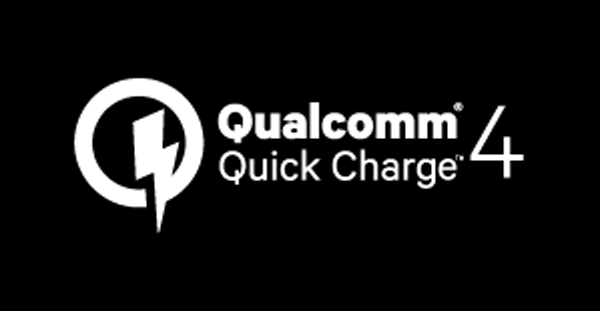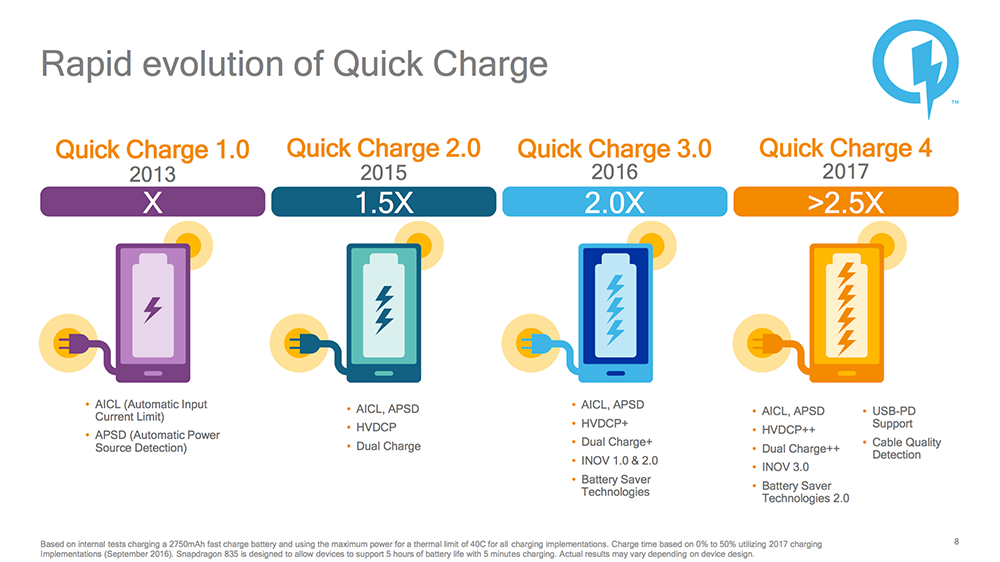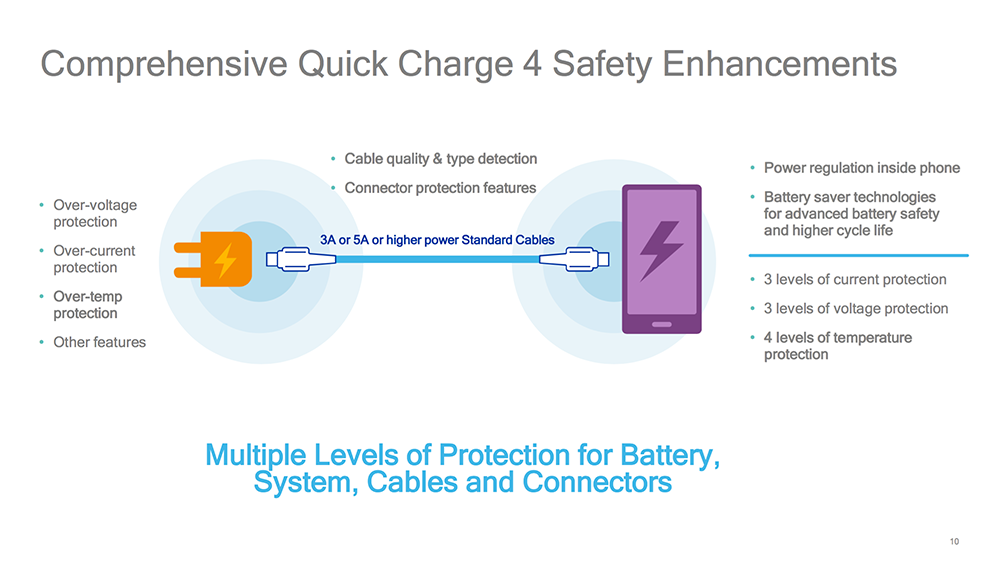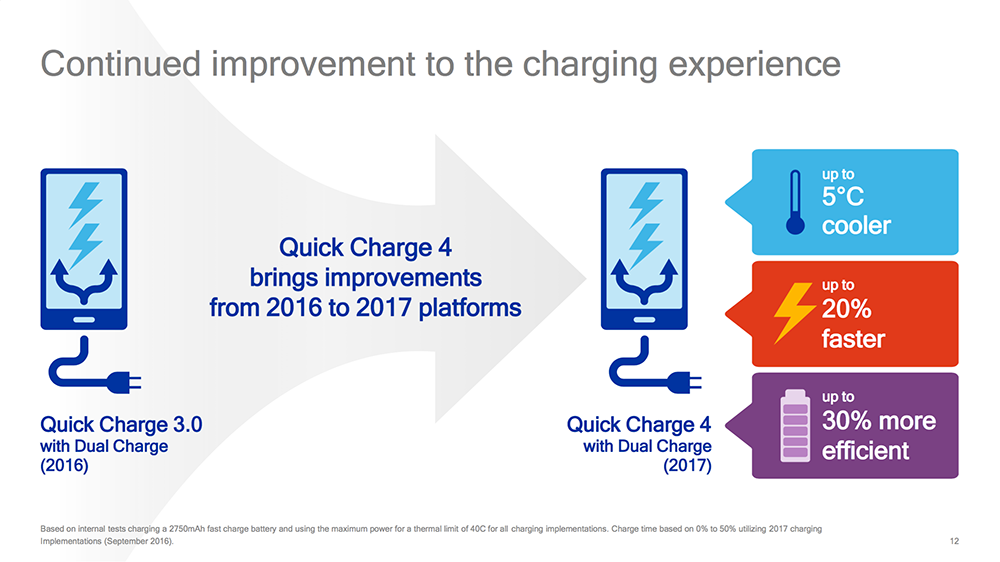Qualcomm Announces Quick Charge 4: Supports USB Type-C Power Delivery
by Matt Humrick on November 17, 2016 7:31 AM EST- Posted in
- Smartphones
- Snapdragon
- Qualcomm
- Mobile

Qualcomm did more than reveal the name of its next SoC, the Snapdragon 835, today at its Snapdragon Technology Summit in New York. It also announced an update to its fast-charging technology. Qualcomm’s Quick Charge 4 promises up to 20% faster charging and 30% higher efficiency than the previous generation Quick Charge 3 found in many current flagship phones.
This latest generation brings a number of improvements, but perhaps the most remarkable change is that Quick Charge 4 is now compatible with the USB Type-C and USB Power Delivery (USB-PD) specifications set by the USB-IF standards body. Previous implementations of Qualcomm’s proprietary charging technology alter the voltage delivered over Vbus to increase the charging rate, which violates the Type-C specification for standard charging that only allows for changing the charging current. They also use a different method for negotiating the charging parameters using the USB data lines that runs afoul of the Type-C specifications too. Quick Charge 4 addresses these issues and should satisfy the language Google recently added to its Android 7 Compatibility Definition Document (CDD) recommending device OEMs not use proprietary charging methods that are not compatible with USB-PD.
Quick Charge 4 also uses an updated version of Qualcomm’s INOV (Intelligent Negotiation for Optimum Voltage) power-management algorithm that now includes real-time thermal management to help optimize power transfer. It also uses an updated version of its Battery Saver Technologies that uses stepwise charging to help the battery maintain at least 80% of its original charge capacity after 500 charge cycles.
Battery health and charging safety are fresh on everyone’s minds after the battery fires that plagued Samsung’s Galaxy Note7. It’s only natural then that Qualcomm made safety a point of emphasis during its presentation. Quick Charge 4 incorporates over-voltage, over-current, and four levels of over-temperature protection, including chassis, battery, and PMIC temperature sensing. It can also sense the type and quality of the charging cable and adds additional protection from over-charging. Qualcomm says that protection “is implemented at multiple levels and throughout the entire charging process to more accurately measure voltage, current, and temperature while protecting the battery, system, cables and connectors.”
Qualcomm’s Quick Charge 4 will be available on devices using the Snapdragon 835 SoC and its two new power managements ICs (PMICs), the SMB1380 and SMB1381. The two PMICs work in tandem as part of the Dual Charge++ feature for improving efficiency, reaching 95% peak efficiency at 3A. The PMICs will be available by the end of 2016 and will be integrated into devices shipping in the first half of 2017.













28 Comments
View All Comments
HomeworldFound - Thursday, November 17, 2016 - link
My phone supports QC3 via a charger but is QC charging at full speed over a USB Type-C ports with Type-C to Type-C cable. I don't understand this proprietary thing?Mr Perfect - Thursday, November 17, 2016 - link
If it's running QC3 over USB-C, then it's out of USB spec and using Qualcomm's proprietary charging method. Manufacturers are using the USB-C cables and connectors to do things it's not intended for.HomeworldFound - Thursday, November 17, 2016 - link
Well the charger is an HTC with the Qualcomm Quick Charge 3 logo. My motherboard has a single external Intel USB 3.1 Gen 1 Type-C port. All of the super-charge crap is off on my system. It charges at the Quick Charge speed. So I guess computers are or will be universal still.Mr Perfect - Thursday, November 17, 2016 - link
Oh, I gotcha. There are valid ways to charge rapidly with USB-C, namely USB-PD. I imagine Intel is using that standard, they're usually pretty good about standard adherence.ZeDestructor - Saturday, November 19, 2016 - link
HTC 10? If yes, USB-PD charging is limited to 10W, while the QC3 charger ramps up to 13+W.Source: http://gtrusted.com/review/htc-10-supports-limited...
VivianLiu - Friday, December 2, 2016 - link
Yes, and I think 2.0 is enough, you can check: https://www.amazon.com/dp/B01J5BO0RSVatharian - Thursday, November 17, 2016 - link
Can we get slower charging instead? I'm sleeping 8 hours/day, I'm fine with my phone taking 8 hours to charge, and it's far safer and healthier to battery than rapid forced charging. This is especially important with most phones having non-removable batteries now.DanNeely - Thursday, November 17, 2016 - link
It's called plugging your phone into a basic USB2 port on your computer or an old cheap 2.5W charger.zodiacfml - Friday, November 18, 2016 - link
Both of you get a plus from me. I also don't need fast charging tech and as a result I charge my phone all the time to USB 2.0 port of any PC at work and at home.For travel I have a battery bank or the laptop again.
Space Jam - Thursday, November 17, 2016 - link
You can disable fast charging in most devices afaik. Or just not use a fast charger.